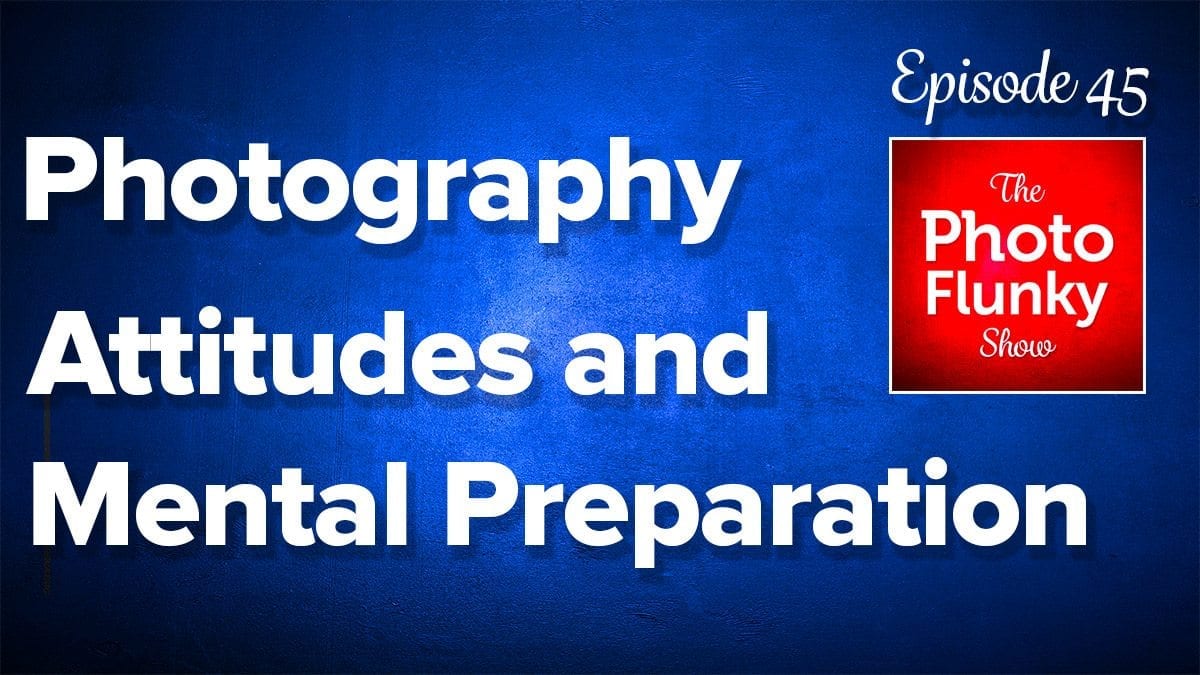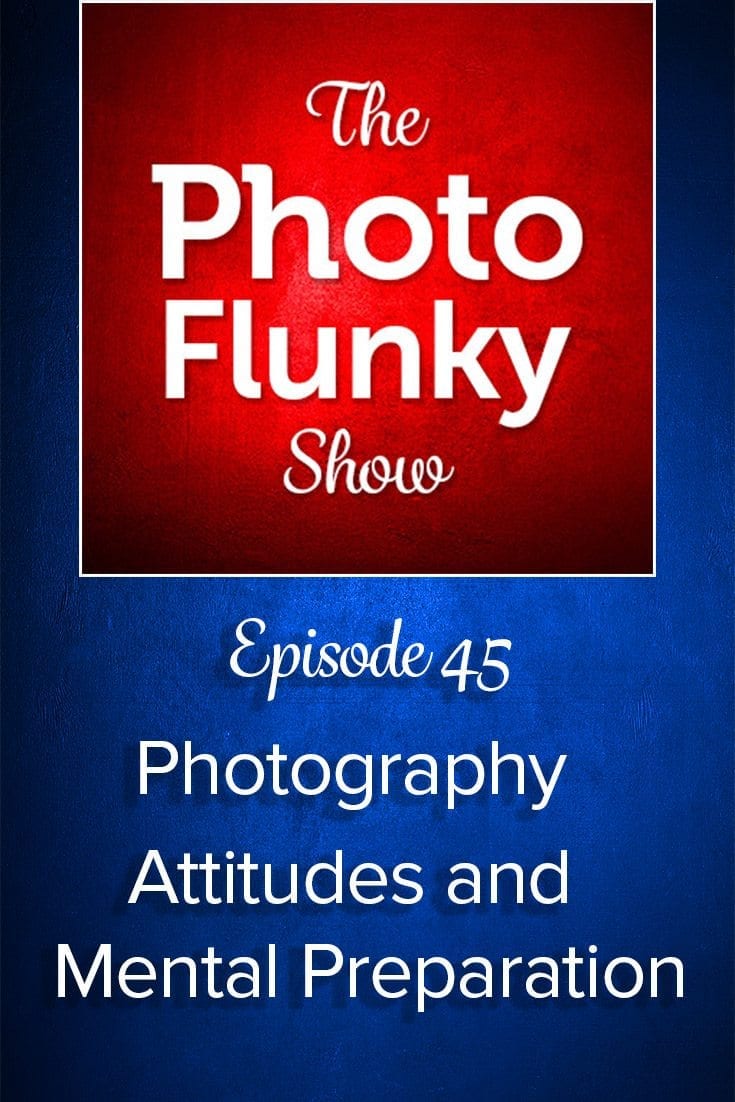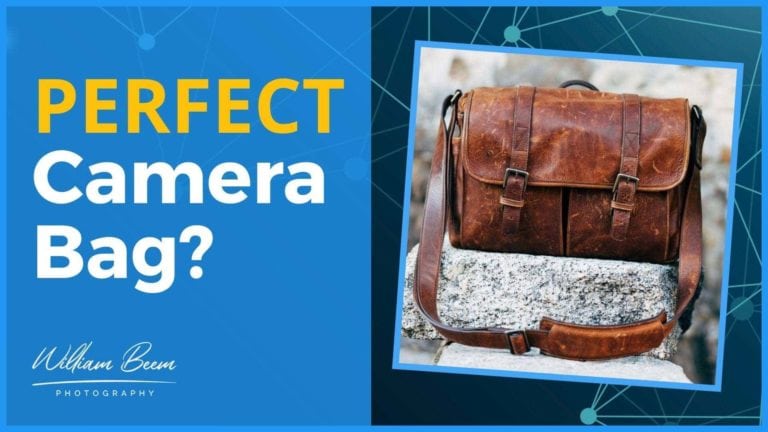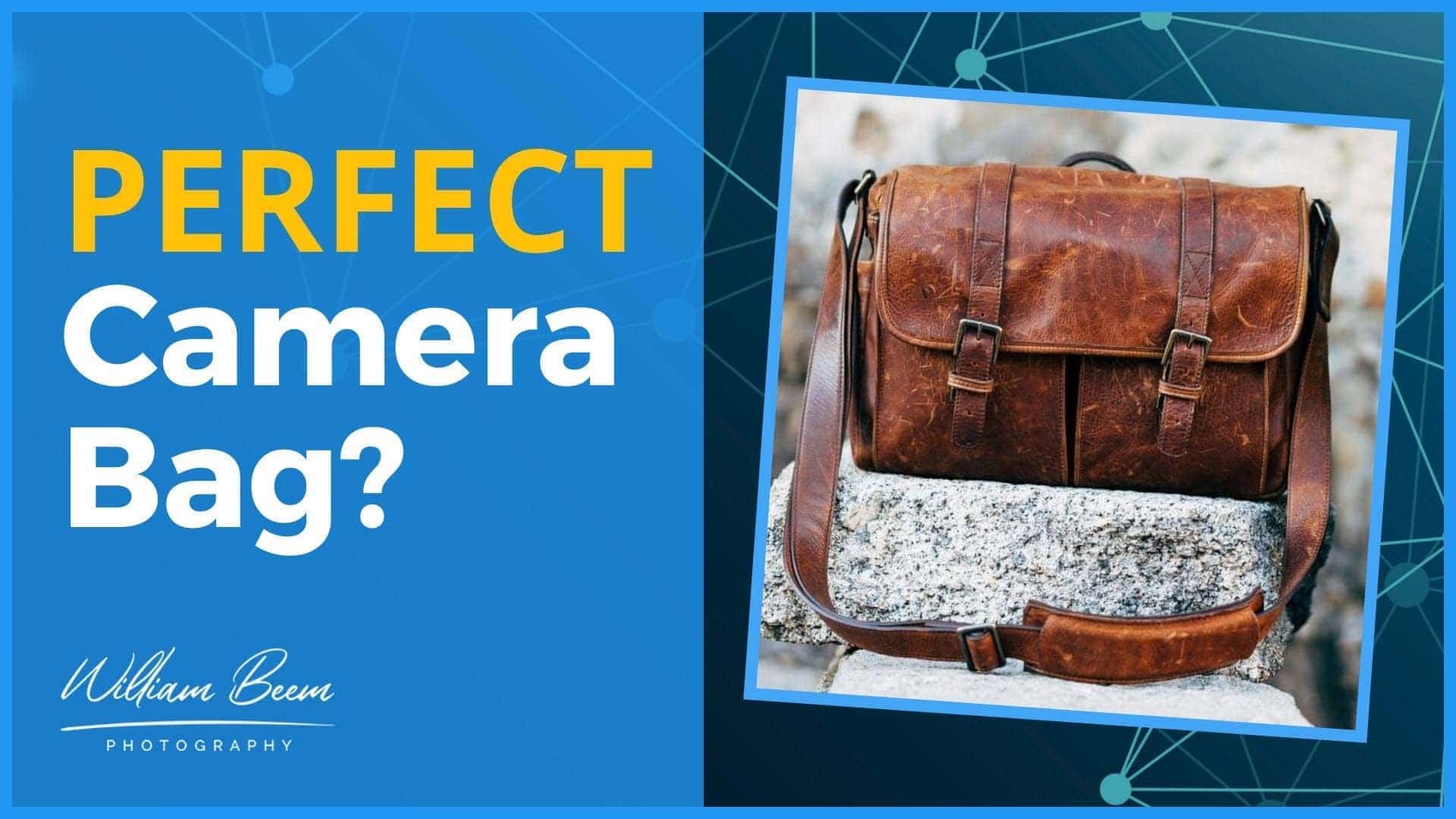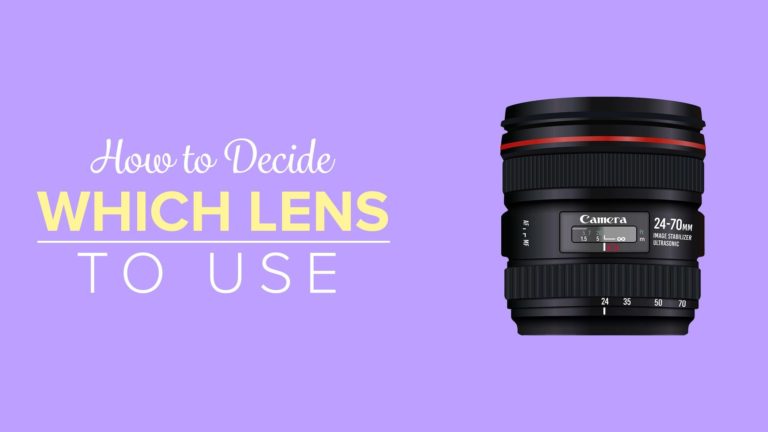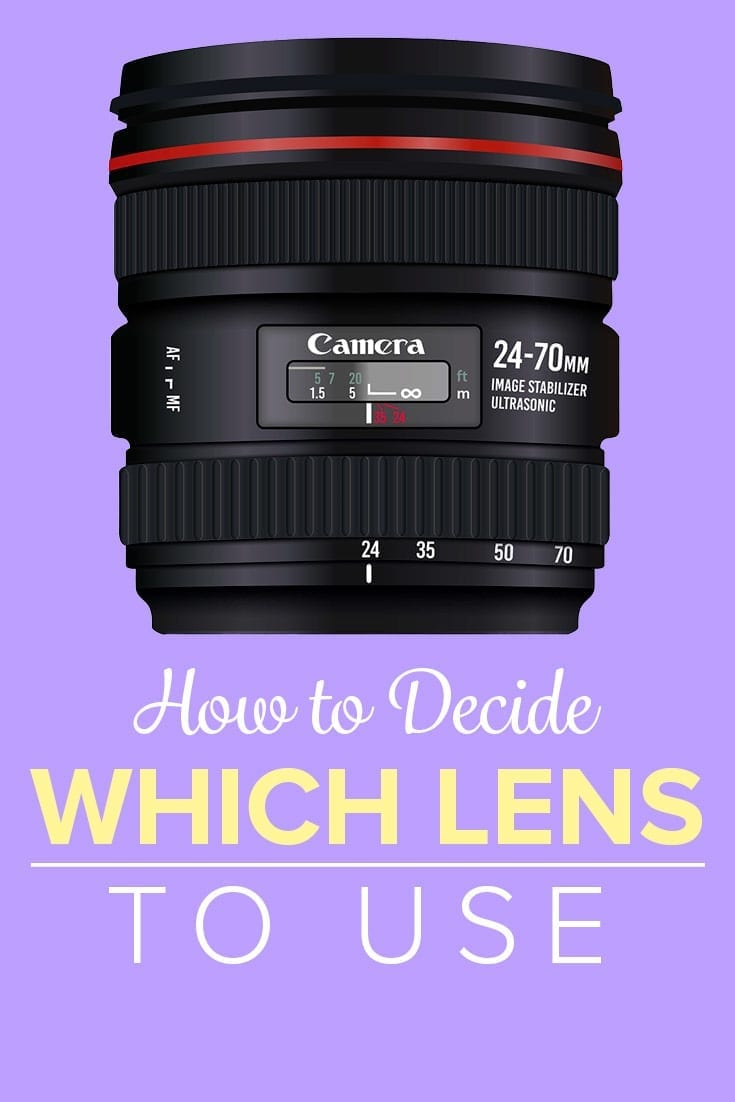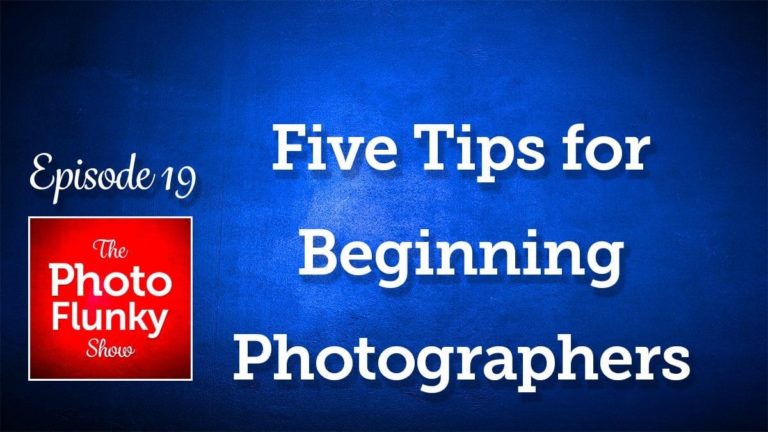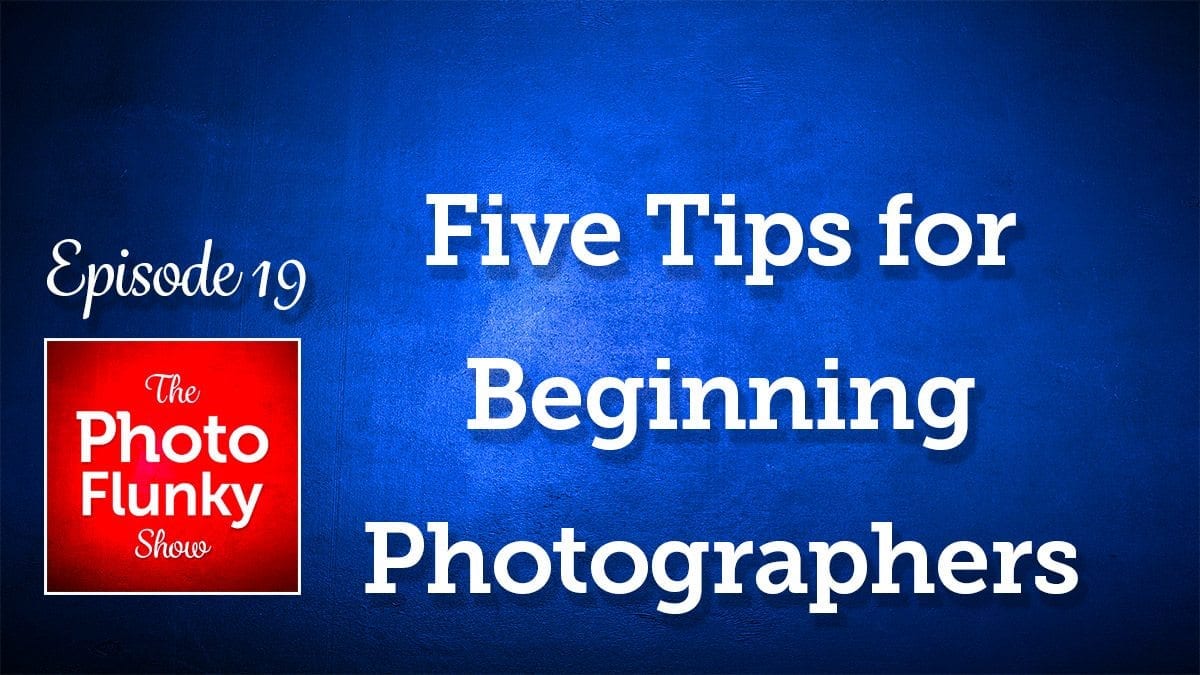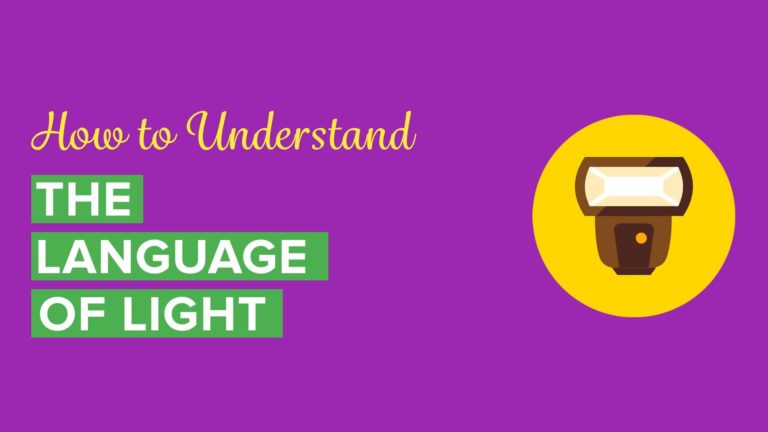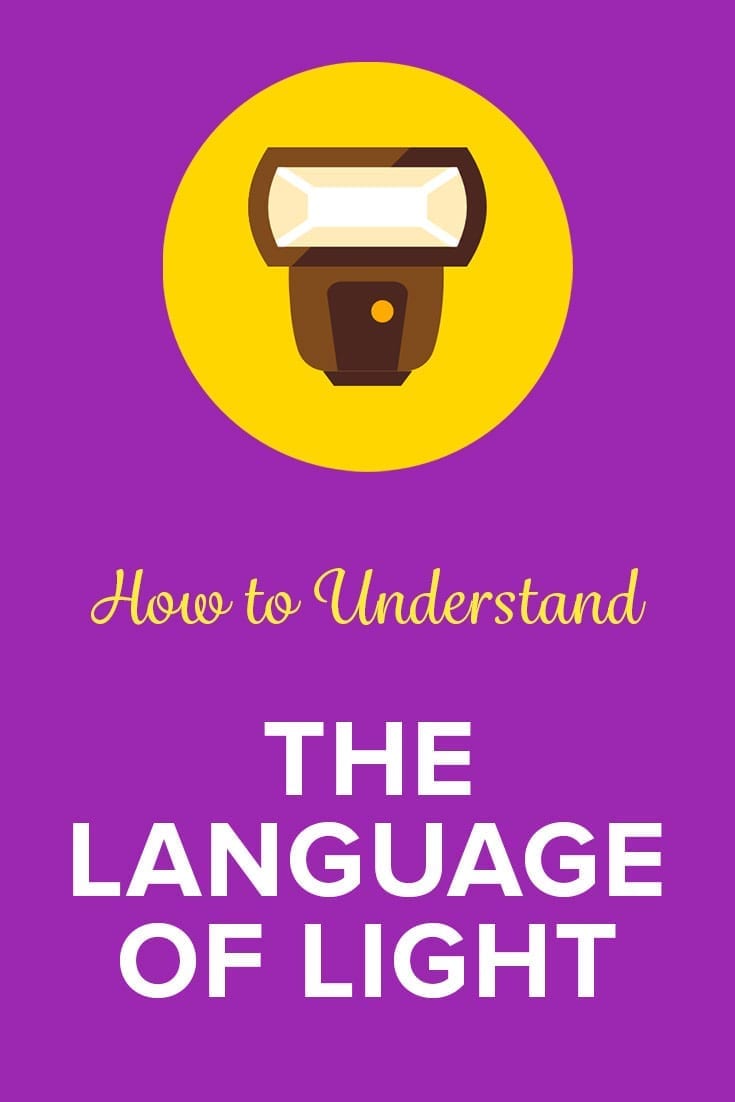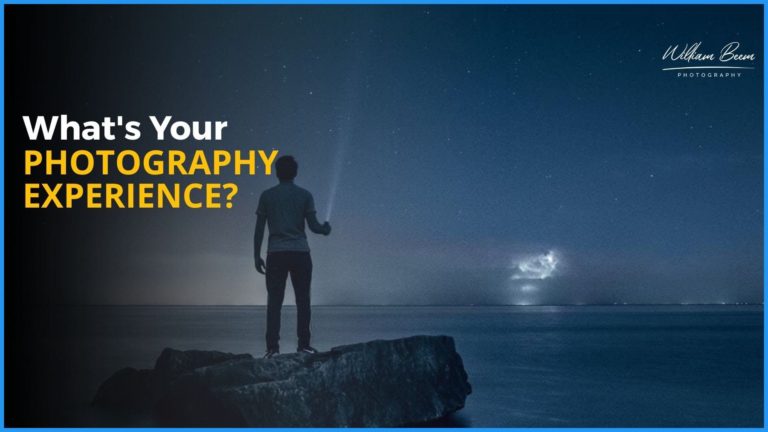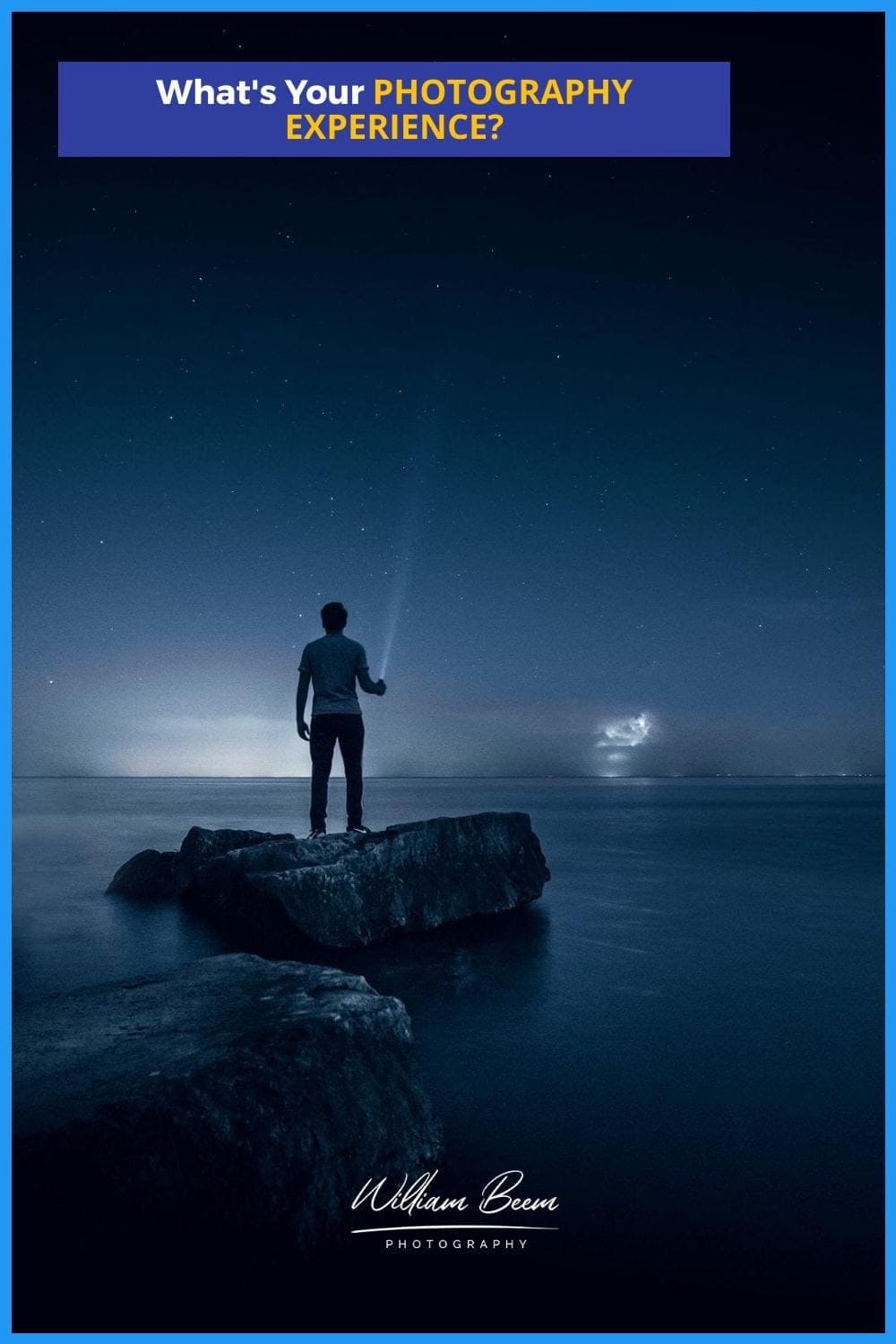Affiliate Disclosure: We earn a commission if you purchase through one of our links at no additional cost to you.
Our Photography Attitudes and Mental Game During the Shoot
Today we talk about the mental aspects of how we approach our photography. Everyone has a photography attitude, whether you think about it consciously or not.
Lee and I discuss our mental game. In other words, we’re talking about the way we get ready for a photography shoot and how we approach our subjects while we’re taking photos.
Your approach may change based upon the genre of photography you enjoy, or perhaps whether the shoot is an assignment for fulfilling your creativity.
There is no right or wrong way to develop your photography attitude, as long as it serves your purpose. However, you may find that a change in your mental game can have a profound effect upon your photography.
If you’re an enthusiast taking photos for fun, it may help to unwind and change the way you see things around you instead of spending too much time in preparation or technical aspects.
Likewise, professionals know they have to get a shot to tell a story, but it’s nice to allow yourself the freedom to take advantage of opportunities that you couldn’t plan in advance.
We Appreciate You
Thank you for listening to The Photo Flunky Show. We’d love to read your thoughts about photography attitudes and your state of mind while shooting. Leave a comment below. You’ll be helping us and everyone who follows you here.
Subscribe to The Photo Flunky Show
Thank you for listening to The Photo Flunky Show. Make sure you get every episode by subscribing.
iTunes – https://williambeem.com/itunes
Stitcher – https://williambeem.com/stitcher
Google Play – https://williambeem.com/googleplay
Blubrry – https://williambeem.com/blubrry
Social Media Links
We love seeing your photos and keeping in touch with you on social media. Here’s where you can find us.
Transcript
THE PHOTO FLUNKY SHOW: Episode 45
Welcome to the Photo Flunky Show, Episode forty-five.
On this episode we are going to be talking about our approaches to photography. Basically, what we are thinking about when we are out in the field taking photos. It could be the field, it could be the studio; it could be in our back yard! Stick around and you’ll find out a little bit more.
William: Hi, my name is William Beem and I was voted Most Courageous in my nine year old Little League.
Lee: Yes, it’s actually standing framed here. I look at it every day when I’m working at the desk.
William: I know. I just saw that and thought, you know, that’s important for people to know.
Lee: I see it every day.
William: I’ve got something framed from when I was in nine year old Little League. It’s a little Charlie Brown drawing and it says Most Courageous, which is kind of a nice way of saying, “We don’t know what else to say about this kid.”
Lee: I think it’s really cute.
William: It wasn’t like he was best player, best hitter, best catcher or anything like that. He was most courageous. In other words, he just came out there and tried really hard and didn’t quit.
Lee: Actually, you know what? That’s better than winning, to me.
William: Well, as a nine year old, that’s really what it was. I didn’t do anything useful at all when I was a nine year old in Little League until the very last game of the season and I hit a line drive that got me a triple.
And then the next year, ten year old, I was the slugger. Oh, yeah! So there you go. That’s your fascinating fact about me. It has absolutely nothing to do with our topic today. We want to talk about our approaches to photography and basically what’s going through our mind when we are out taking photographs.
I found out through discussion that Lee and I have very different things going through our mind, which usually means that either one of us assists the other or we leave each other alone. We don’t necessarily shoot together.
I’m going to start off with this a little bit. My idea is that I want to know that I have got a purpose for the photo that I’m going after. Generally speaking I’ve got a purpose. There has got to be some kind of story behind it and if possible, I’ve got a vision in my head already of what the photo is going to be.
Now, what I go through trying to make that stuff is really kind of hectic at times because things work, things don’t work and you’ve got to kind of go through and solve your problems. But you know what you’re working towards.
But Lee, you’ve got a different approach.
Lee: I’ve got a different approach. Now this is not counting if I am out on an assignment to get something specific, which we might touch on a little bit later, but for my own photography I like to go in with no plan. I like to pick a lens that I think, OK this one! And then I go in and see what I can get with that lens. You get lots of surprises like that. Sometimes you come away with little or nothing, but I usually don’t have any devastation level disappointment with that.
William: I think what you are going to do and what you are going to think about really depends upon the type of photography that you’re doing. In my case, I typically prefer either doing travel photography, portrait photography or it’s going to be something for an assignment. So in other words we mentioned that we have another site called Orlando Local and we’ve got another one coming up that might have some pet photography involved, which we are not going to bring up just yet, but I’ve got specific genres of photography that I want to do and depending what I am going to be doing, that really determines how I’m going to be thinking about it and what stages I’m going to go through.
But when you talk about you’ve got your camera and a lens, it almost sounds kind of like street photography. You are going to walk out and see what you get.
Lee: Well, yeah and I mean it’s not completely unplanned. I have an idea. For example if I’m going to a specific place, you’ve got some kind of idea what sort of photos you are likely to get. There are certain things that I never or should I say, very rarely, go somewhere and have one specific shot in mind. I think the exceptions for me are fireworks and even then, it’s kind of see what I can get. I have an idea what focal length I want to use and where I want to shoot from. That is pretty much it. So that’s the extent of my planning from results backwards.
I think you prefer to look at the end result that you are shooting for and then work backwards through the steps to getting that. I am the other way. I tend to walk in and go, “Ooh, ooh! Wait! There’s a photo. Wait. I’ll catch up with you.”
William: So do you walk out, take some photos and think OK, here’s a story I can tell to go with this, or a story that I observed while I was taking this photo? I think I want to know my story first and then go find, for lack of better words, I’m going to go find evidence to support that story.
Lee: I like to find the story as I’m walking around. And sometimes through the photographs I find a story. I might start with something and think, oh! And it’s almost like a little breadcrumb trail that leads me somewhere. It’s really … my photography side works with my creative side and it almost defies everything about me in the way that I handle every other area in my life, which is usually terribly annoyingly organized.
William: You are very annoyingly organized!
Lee: But I am the complete opposite when it comes to creativity. I am just one of those people where I’ll download some kind of template and the first thing I do is switch off any kind of prompts or help or assistance to tell me that something is hanging off the edge and going to be cut off …yep. That’s on purpose.
William: OK, let me ask you this. Are you doing photography generally because you enjoy the creative aspect of it and it’s just an escape from other things or there are times where maybe I’ll ask you to do an assignment. Are the two things kind of different in your mind or are you still going out and exploring to see what you can get?
Lee: For the most part I’d say they are almost entirely different. Even with an assignment, there is still that part of me, because I’ve got a camera in my hand and I want to go and see what I’m going to get. I like looking at things from different angles and I think that is just the way I am. I’ve got a strange take on life sometimes and I think that sort of comes out in the way that I look through my photos and the way I create things.
But with an assignment I do follow more of a structured plan because obviously there is stuff that you need to get and you’ve got some kind of order. You are working towards the big picture.
William: Alright. Let’s look at primary. Primarily for you, is photography a creative outlet?
Lee: It is. Yes.
William: So you are really into photography just because you want to have fun, it’s a creative outlet and I guess for lack of a better word, it’s an escape.
Lee: It is an escape. It is also a way to capture my memories. So it’s kind of, I guess, an escape from the present if I want to spend some time reminiscing in happiness of past experiences. It’s a nice way to merge my happy memories with today.
William: Do you plan ahead and say OK, on this day I’m going to go out and take photos or do you just say, I’m in the mood. Let’s go see what’s there?
Lee: I’m in the mood. I find creativity is a mood thing. And when you are working that’s different. You go and you get the job done and I think that is maybe the reason why my approach is a little bit different. I actually enjoy both. I found it a refreshing break to have some kind of structure to the photography assignments. I have thoroughly enjoyed them. But I do like to have a bit of the balance.
William: Alright, so you’ve got to be in the mood. Now here’s the question. And I hate this word, but are you waiting for inspiration to strike?
Lee: Inspiration doesn’t strike.
William: I didn’t think so.
Lee: No, it doesn’t strike. I mean, if you have your eyes open and you just relax about things instead of being uptight about “I’ve got to get this specific shot” you will see things that you would otherwise miss. If you are so tunnel vision focused on your one end result you are going to lose your peripheral vision and sometimes that’s where the real treasures are.
William: OK, give us some examples of things that you’ve caught that maybe other people might have missed or things that your peripheral vision picked up.
Lee: Well, I remember setting up one night to take fireworks shots and it was just one of those evenings that required a lot of preparation and I was sitting in my spot probably for the better part of 90 minutes. I had a young child with me and I had to keep her entertained. It probably wasn’t fun for her and she was pretty good about it.
As the show started the heavens opened up. I mean it was just torrential Florida downpour. My camera is weather resistant; it is not waterproof and I had no option. I had to pick up and go.
The other thing is that I was really sick and I probably shouldn’t have been out at the time anyway, so I was feeling horrible and I went and dived for cover and honestly felt that I had lost everything.
I sat down for probably about an hour and everybody left and as I was walking out the rain had stopped and I saw these beautiful reflections with these colored lights and I took a completely different photo and that was my treasure. There have been a few situations where I have turned around and seen something else while everybody else is focused on the show.
I sometimes like to turn around and look at the people.
William: Actually, it is surprising to me, but we are both alike in that because I will go out there, I’ll plan what I want to take and the fireworks shots like you were talking about. Let’s say that’s what I was going out there for. I’ll set up for that and you’re right. Sometimes an event happens or a thunderstorm comes down and you are just not going to get that shot and you need to move and leave. But you’ve got to be open still. You can’t be so rigid that you miss opportunities around you.
So maybe you don’t get the fireworks, but the reflections … especially with the lighting in this case we are talking about Walt Disney World someplace. The lighting and reflections just really make it a wonderful scene. It may not be what you thought you were going to get, but you still come home with something that you can keep and love.
Lee: That’s right. And the irony is it would be easier to redo the fireworks shots because that happens every night there. To try and do a retake of that specific shot I got would be luck. Planning generally isn’t going to guarantee you that shot at all. So it is sort of a strange little twist. Sometimes you just need to look to the side. Sometimes you get sidelined somewhere and you don’t get where you want to be.
And sometimes I also accept that there is a point where you go, “I’m not going to fight this because I’m not going to get it.”
William: Well, like you said, you need to be open to the possibilities that are around you. It doesn’t hurt to change your plan sometimes. Sometimes you get both what you are shooting for and then go ahead and take advantage of the opportunity. Other times the opportunity is going to be fleeting. You have to get in and take advantage of it right then or you are never going to get it.
Lee: That’s right. I think the point is if you are focused on one thing very specifically you are probably going to do it very well, but you have to accept that you are going to miss anything else that might be happening around you, because you are solely focused.
William: Well here is the other dilemma that you face. Let’s say that you know I can get one or the other. You have got to make a decision. Am I going to get the one that I planned for; that I am here to get? Or am I going to say no, this is better so let me go and move over there? I guess that kind of depends upon your purpose for being there.
Lee: I suppose that would. I think on an assignment I would go and get what I needed to get because there is a purpose. Usually with an assignment there are other people depending on you. So that is something completely different.
For myself I have a tendency to want to buck the trend so if I went planning to get something and I see something else, I am more likely to say I’m going to risk it.
William: There are ways though that you can use your creativity and still keep the assignment. And this is me making it up on the spot, but let’s say that you find that it rains and the fireworks are still going on and then you look down in the reflection and you see the fireworks in the reflection. Who’s to say that you can’t shoot the fireworks from the reflection and that they have to be in the sky like everybody else shoots?
Lee: Oh, absolutely. And I probably would have, like you say, people are an example; people watching. The expression on people’s faces when they are just mesmerized. You’ve got these long exposures and there is very little blur of the people because everyone just freezes. It’s like this calm comes over everybody.
William: Well, that’s one of the things that I also like. When you are shooting something for an assignment, or even if I’m shooting it for myself, I still want to see a story. Whereas I think you are saying, “I want a photo rather than a story.”
Lee: I build the story from the photos. To me, the photos sort of document my experience. They might not be in the right order, but I take them.
William: I think of something that I was told. If you are going to shoot an assignment or a story, you are going to shoot it from big to small. So the fireworks over the castle are the big thing.
Lee: Yes.
William: If you can see the guys preparing for the fireworks and get some shots of that, that’s part of the story. But also there is the whole crowd that is looking there and I think photos of a crowd, particularly if you can get someone’s face as the burst goes off. It’s going to show some light on their face and particularly if they’ve got glasses on then you can see the reflection of the fireworks. There are some interesting elements of the story. So I look at photography mostly as a collection of images for a story.
Lee: And you’re right. I think it also depends how much time you have. For example, you’ll go out and you’ll devote a day to assign to a photography thing. I’m going to give you our classic example because we live here: going to Walt Disney World to one of the parks. You’ll go somewhere specific, you’ll have some photos or a photo in mind, you’ll go and get it, you might get a few other things, you’ll come back. But if you are documenting a story there for that day, you will get the bit picture and you’ll then start almost zooming in, so to speak.
Now that little ebook that you wrote about Walt Disney World photography …
William: Oh, that’s going way back!
Lee: That really changed the way that I took photos. I was on vacation and I had three weeks to do this. So yes, it did impact me and yes, I did think about the story like that, but I think I probably didn’t recognize how it wasn’t restrictive on me in any way because I had so many days to do it. So whereas you go for one day and try and get your story, I had twenty-one days to go and do it. Which meant it was pretty easy. I suppose it depended which lens. I had a range of lenses from wide angle 10.5 mm fisheye all the way through to a 70-300 mm zoom. So that was already giving me my options and everything in between.
William: The ebook she is talking about is something I put out about four years ago. It’s called Capture the Magic. It was specifically about photography at Walt Disney World, Magic Kingdom. I had a couple of things in there that Lee and I have talked about behind the scenes. I didn’t realize that she had actually used it as much as she had.
Lee: I did. I actually posted links all over the place. In fact I got into trouble on some forums. I didn’t know. I was trying to be helpful. I was so excited because people were asking, what changed your photos? You really upped the game with your photos this year. What happened?
And so I gave credit where credit was due. It was kind of cool to get into trouble for it, but I emailed my husband, who wasn’t my husband at the time and told him how much I loved it and the next thing I invited him for a drink and, well …. we are married.
William: Exactly, so there you go. Start a blog, write an ebook and you can get married.
Lee: It was a damn good ebook. That was a good book!
William: I have taken that offline and you know, maybe I should …. I kind of want to redo it and put it back up so maybe I will work on that over the next coming weeks or months.
Lee: You should. Even if it doesn’t necessarily have to be a Disney book, but the whole concept with the examples that you had made it so easy. I was quite a new photographer. I was new to the world of DSLR. I think I had only had DSLR for about a year or so.
William: Well, I was taking advice that I learned from other photographers and one of the ones I got from Joe McNally and really loved, I put in the book, which was “think like a coffee table book.”
You don’t just go out there and shoot the main subject. You shoot all sorts of things and details around it. You tell a story about what’s in that coffee table book. Because if someone is going to buy a coffee table book about something, they really want to know everything.
That’s kind of the way I use that as an approach to how to take your photographs at Walt Disney World.
Lee: I love the coffee table book. As soon as he said the word ‘book’ he had me hooked and I wanted to see more. Because, I mean, I am a scrapbook person. I love my scrapbooking, I love my photo albums, I love making my digital online books and templates and pages. I am usually looking for backgrounds and all of these little software things that you can get have got their own preinstalled things where you can buy or download extras.
I kind of don’t want to use them because somebody else has used them. It sounds silly, but I want my stuff to be totally mine; I want it to be totally different and if I’m going to use something generic, well, maybe I’ll use it as part of something, but I often have a look at something and I don’t get the shot I want, but I’ll look at some trees with some bright red flowers somewhere in between and think, oh, background! That would work.
So I’ve got lots of photos that look like nothing when you are looking at the photos, but in my mind I know what I want to do with them; maybe make them a bit translucent or transparent.
William: That’s really the way I work. I want to have a purpose behind why I am taking the photographs. You may not know what coffee table book or what kind of scrapbook you are going to do before you go there, but you know the elements that you need. So even if you don’t know what you are going to shoot, you have got a structure in your mind of the kind of things that can work for you.
It’s like you don’t know that it’s going to be this wall, but you know that you need a background.
Lee: That’s right.
William: You don’t know if it’s going to be flowers or a coffee mug or whatever little detail it is, but you know that there are going to be details, there are going to be backgrounds, there are going to be major elements.
Lee: That’s right. I mean, I like to make my own birthday cards and invitations and whatever. So I like to have my own backgrounds and things.
William: I guess that’s kind of really where our approach is. Although different on the surface, underneath, we are really getting down to the fact that we have got a purpose and it may not be that I’m looking for a specific photo when I go out, but we know that there are elements that we are trying to capture and in my case, I know there is a story that I always want to tell and how I put it together.
I think really in your case too, because if you want to do a scrapbook you know that you need elements to put it together and the scrapbook itself is the whole story.
Lee: Oh, absolutely. I’m looking for things, but I am sometimes not looking for something specific. I’m looking to see what I can find that will work and I will just spot things. So I guess I kind of go in there almost pretty relaxed and I’ll see something and think, that! That! This!
William: Exactly. Your creativity is on the spot, but you know the type of elements that you need.
Lee: Yeah. I’ll recognize it when I see it.
William: Whereas I’ll go in there with something specific in mind.
For composition, my biggest thing when I go someplace if I’m shooting something for a big story, what is going to be my angle for the big shot? And I will stand there for hours if I need to, just to make sure I’ve got that spot.
Lee: I’ll do that too. And it’s hard sometimes. Especially on your own.
William: Yeah, if the sun is beating down on you and there is no place to sit it can be miserable sometimes.
Lee: I know. It can be horrible. Now at least we can do it as a team and take turns going and getting drinks and stuff.
William: I know, but as soon as you get up and go get a drink someone else wants to sit down.
Lee: That’s why we take a big camera bag!
William: That’s the troubles of taking photos at Walt Disney World.
But when we go to some other places it’s not such a big deal. We went off to Las Vegas for our honeymoon and we had some nice … we didn’t take any cameras except for our iPhones – and we still looked at things the way that we normally look at them.
Lee: We did.
William: We still got the same elements. We took a lot of photos of food. At House of Blues one night you were taking photos of close up elements; I think even bottle caps on some of the furniture that was there.
Lee: I did and you know, I’ve used those all over the place. I really enjoyed it. I must say that Las Vegas trip was where I really got into using my iPhone for photos. To me a phone was to take snapshots to remind me of things. They were reminders.
William: It’s really good for detail shots, isn’t it?
Lee: I really enjoyed it. I don’t even have one of the newer iPhones. I’ve got the old 5S and even with that I am perfectly happy. It serves its purpose. I thought the iPhone camera on the iPhone 5 was absolutely dreadful. After about six months I realized it was so much better when I took that protective film off the back! I had no idea. I was telling everyone I didn’t know what the big deal is about this iPhone camera.
William: You were shooting through cellophane.
Lee: Even my dreadful Blackberry was better. Yeah, I kind of felt silly about that. I still get teased about it.
William: No, not by me. I would never do that!
Lee: Now you will, because I didn’t tell you that before.
William: Alright, let’s take a look at a couple of other types of photography. So I mentioned one of the things I enjoy doing is portrait photography. In that case I know I am going to have some kind of a theme so I’ve got a model; if I’m lucky I might have an assistant and of course a make-up artist and there’s going to be wardrobe to go with it.
Everything has got to be stylized in advance. If we just all show up there and say, “What do you want to do?” I don’t know. We are going to get some really boring, dull photos.
Lee: Oh, definitely. When you’re working with people you need to have some kind of plan, even if it’s just a basic outline. You’ve got to have some sort of order.
William: It doesn’t mean that you’ve got to do everything meticulously and just get those specific shots. Unless you’re working for a client that needs something. If you are doing it for creativity and I’m working on, for example, my portfolio or a model is working on his or hers, then you have got freedom to come up with things depending on what you find.
Lee: Yes.
William: But I kind of like having at least a skeleton of a plan when I get there. I want to know, are we shooting something that is going to be fine art? Are we shooting something that’s going to be glamor? Are we shooting even a pin-up style? Whatever it’s going to be. And what are the elements that we are going to take with us?
That’s going to direct the make-up artist as to how they are going to do their hair and make-up. That is going to direct wardrobe. It’s even going to direct which model you are going to get for the job.
Lee: That’s true.
William: Some models do pin-up really well, but they don’t necessarily do other types of photography modeling really well. It’s not really a criticism as it is that people are better at certain things.
Lee: We all have certain strengths.
William: Well they have different strengths, but they also have different interests. The models I’ve done that were into pin-up really know that genre very well. They know the poses, they know the clothes, they know the expressions, particularly.
One of the things I found is if I just go with a model and we don’t have a plan, usually the thing I worry about most is the expressions and armpits.
Lee: Yes. Or no expressions and too much armpit.
William: Exactly. When I’m working with a new model, typically they are holding their arms up on their head and they are showing me their armpits, which I really don’t need to see.
Lee: And claw hands.
William: Claw hands and blank expressions. Now blank expressions can work in some photos. But there are times when I want some kind of expression. I want some kind of feeling or emotion coming from the model’s face. They have got to be an actor or actress to bring that across and that’s why I’m usually saying stupid things, just trying to see if I can either crack them up …
Lee: Feel something and show it.
William: If I can make them angry sometimes that works better than if I can make them laugh.
Lee: That also depends on what kind of photos you’re taking.
William: Now the next thing I’m going to be looking at, as I mentioned, is pet photography. I have got very little experience with pet photography. All I know is trying to do it with puppies is not something you ever want to do alone.
Lee: Uh, no.
William: I did this with our dog Milo when he was a tiny little puppy and Milo was all over the place.
Lee: Milo hasn’t changed.
William: No, Milo wants to lick the lens, Milo wanted to jump up in my lap; he wanted to be close to me. He wanted to have fun. And trying to get dogs to sit and look interesting or mean or whatever it is that you want to get out of the animal …. I don’t think you want a mean animal.
Lee: No!
William: I saw something that was going around on Facebook last week though. It was an interesting meme of a photographer who captures dogs right at the moment that he is tossing a treat for their mouth. And they have got these big bulging eyes and it looks like a smile where they are just lunging towards the treat.
Lee: Some of them were actually going cross-eyed as you can see the treat coming towards their mouth. It was so funny.
William: I apologize that I don’t recall the photographer’s name, but I thought it was genius work.
Lee: It was brilliant. It really was!
William: But that is someone who is approaching with a plan. That is me. I’ve got to walk into this with some kind of plan. I don’t mind deviating from the plan or adding to the plan if circumstances arise, but I’ve got to walk in there with a plan. I’ll get mildly annoyed at anything that gets in the way of the plan, but I’ll still walk out there saying: “I’ve got to come out with a photo.”
I may not get the photo I want, but I’ve still got to leave with a photo; something I can use.
Lee: Yes
William: Whereas when you are going out there to be creative, does it bother you if you go home and say, well I didn’t get anything today.
Lee: Oh, I get really annoyed. I come back and I’ve got nothing. I mean, when was it? Last week? You picked me up after a day out and I didn’t get all the categories. I had a loose outline and I did go with some sort of framework; there were some categories of photos I was looking to get. I knew I wasn’t going to get everything, but I had some sort of guideline within which to work. When I came back I just felt like I’d lost everything. The reason I felt like that was, it was a rare thing for me, but I had one specific photo in mind. A series of ridiculous events that you could never have predicted – just one thing after another – just got in the way of it, and despite all the time I devoted to that shot, there was nothing I could have done. I wasn’t going to get it.
William: It happens. Sometimes I am glad I’m not a wildlife photographer. Because you can go out there and set up and think, OK. Where are the animals? Why aren’t you here on this branch looking at some prey or something like that? I don’t know what they need to do for animals.
Lee: This is what happened that day and I guess it’s because it was the last thing I did before I left and in my mind when I left the first thing you said was, “Did you get some nice photos?” and I said, “Not really.”
When I got home I thought, well actually I did.
William: But you just didn’t get the ones that you had in mind.
Lee: I’m not used to planning very specific shots and for that day there were a few that I had planned. I guess I haven’t learned to work with disappointments based on a series of very specific shots. I had to learn a lesson in that and I actually did get photos and they were the photos I would have been happy with anyway, if I had gone my usual style.
Because I had a plan it is a bit of a learning curve for me and I kind of messed up in the way that I handled it and I can learn from that. And I also messed up sometimes in my approach. You can get too locked into something.
William: That’s interesting though. So your odds of being satisfied with what you come out with are better if you don’t have a plan for going into it.
Lee: Yeah, and I wouldn’t say I usually go in with absolutely no plan. I never go in with no idea. Well, I shouldn’t say never!
William: Well, you’re going to a specific place, whether it’s Glasgow or whether it’s Magic Kingdom. You are going somewhere so you have an idea of what may be there.
Lee: That’s right. And you fit the lens accordingly. And I’ve also gone in more than once and I’ve made this error way too many times, and I’ve taken the wrong lens. I thought I had something and I had something else. It’s kind of funny how it just changes everything. I could pack my camera away and say, well it’s all wrecked. I’m not going to get anything for today. Or you can say, well let’s see what I can get with what I have.
William: Well that’s happened to me. I was on a business trip out in San Francisco and I wasn’t there as a photography trip. I just brought my camera stuff along for the time when I wasn’t working and I went up to the Cliff House to have dinner, I was cleaning a lens I had – that Nikon 18-200 mm lens, which is a good travel lens.
Lee: Nice one.
William: Then I had a Tokina 12-24 mm. My first night there I’m cleaning the lens at the table waiting for my food to come and I turned it upside down to clean the other element and I heard this loud crack.
Lee: Oh no.
William: The front element fell out of the barrel of the lens and just cracked on the hard floor.
Lee: How did that happen? Was it a faulty lens?
William: That’s what I would call poor quality control on Nikon’s part.
Lee: Oh my goodness.
William: It literally just fell out and cracked and I thought, OK. I was supposed to go down to the beach and shoot the Golden Gate Bridge at sunset and even the sunset didn’t really work out. It was just one of those overcast nights.
So I’ve got my photo of the Golden Gate Bridge. It’s on a very blue hour night which kind of works for the Golden Gate since it’s a nice warm color and I did that with a 12-24 mm. The Golden Gate is too far away. I had a very different image in my head.
But you know what? That was the only lens I could work with and that’s what I had to use.
Lee: Do you know what’s really funny about that? If you told me I was going to shoot the Golden Gate Bridge and I had those – well I had the Tokina 11-16 mm, not the 12-24 mm – but of the two, that’s probably the one I would have taken, assuming that it would be better. So it’s interesting that you tried it and said you knew.
William: Well the beach I was at was a bit further away than I would want to use that wide angle lens.
Lee: Oh, OK.
William: I mean if you got up closer to it, sure. Absolutely. But I was a little further away. I planned on using the focal length a bit more to have compressed images.
Lee: Alright.
William: But you know what? I got a shot. I’m not disappointed with the shot. It’s just not the shot that I planned. And sometimes that’s the way it goes.
Alright, we hope this has been helpful for you. If you are interested, we have got a transcript of this show available for you at williambeem.com/episode45.
Thank you very much for joining us on the Photo Flunky Show. If you would like to keep up with us on social media you can do so on Twitter, @photoflunky and on Facebook at William Beem Photography
You can find links to this episode and all of the other ones at photoflunky.com and of course if you’d like to subscribe, we would love that. Go to at williambeem.com/itunes or williambeem.com/googleplay or williambeem.com/stitcher or even williambeem.com/blubrry
Thank you very much. We’ll see you again here next week.

